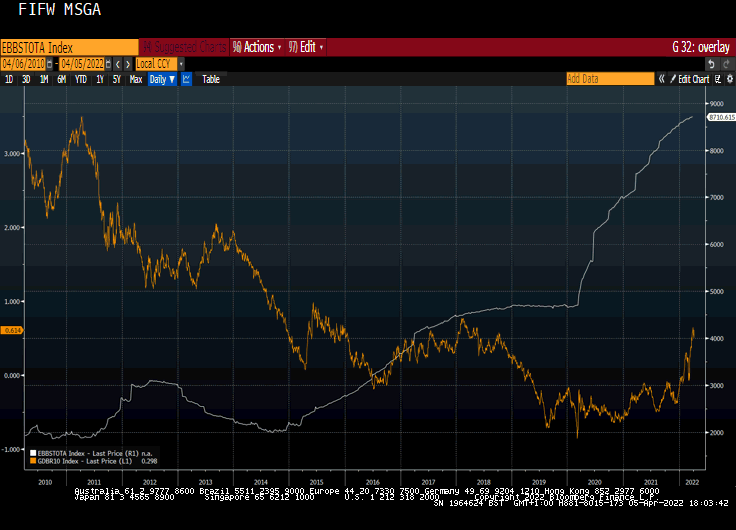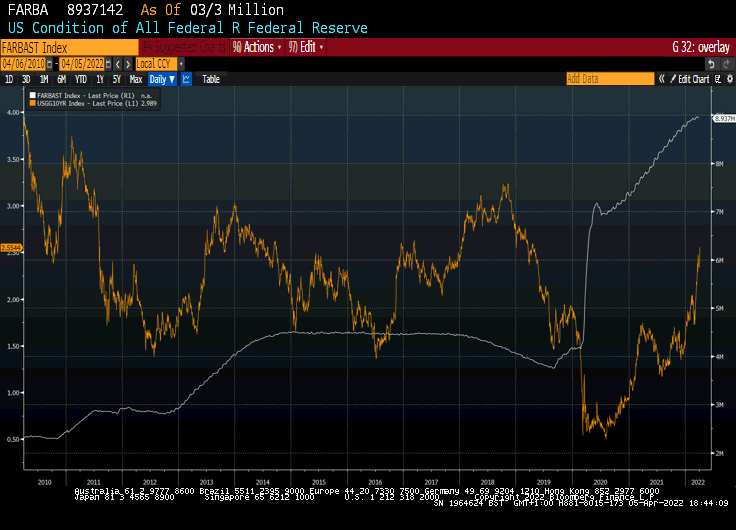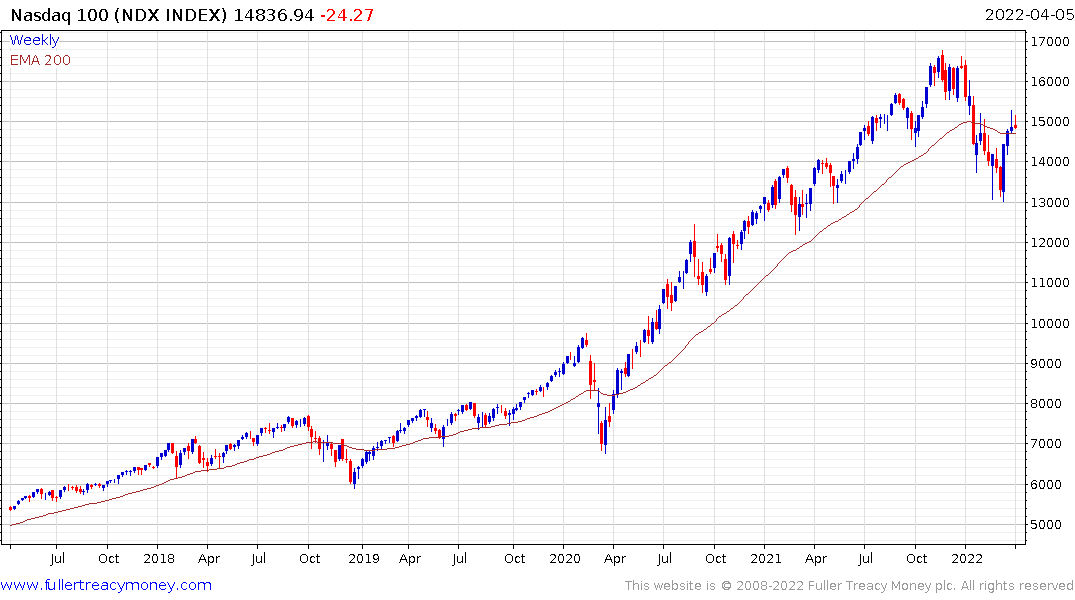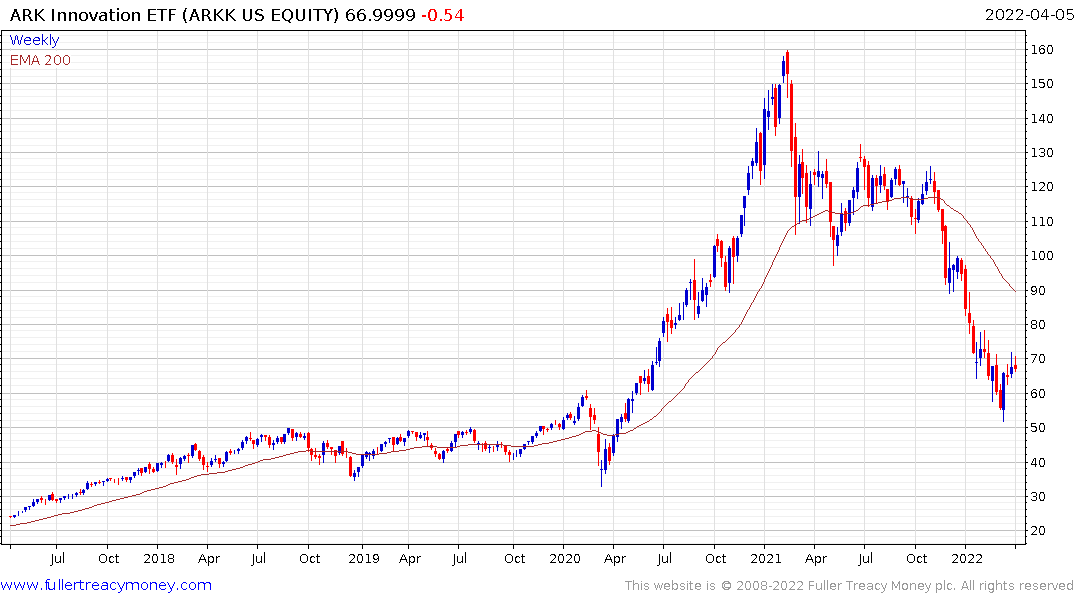Brainard Says Fed to Shrink Balance Sheet Rapidly as Soon as May
This article from Bloomberg may be of interest to subscribers. Here is a section:
Federal Reserve Governor Lael Brainard called the task of reducing inflation pressures “paramount” and said the central bank will raise interest rates steadily while starting balance sheet reduction as soon as next month.
The Federal Open Market Committee “will continue tightening monetary policy methodically through a series of interest rate increases and by starting to reduce the balance sheet at a rapid pace as soon as our May meeting,” Brainard said on Tuesday in remarks prepared for a speech to the Minneapolis Fed.
“Given that the recovery has been considerably stronger and faster than in the previous cycle, I expect the balance sheet to shrink considerably more rapidly than in the previous recovery, with significantly larger caps and a much shorter period to phase in the maximum caps compared with 2017–19,” she added. Officials next meet May 3-4.
Quantitative tightening causes deflation. Everywhere it has been tried, that has been the result. If you have an inflationary problem, sucking liquidity out of the system is a good way to get it under control. Arguably, it is much more effective than raising rates. In the process, demand will fall, and growth will deteriorate. It will also reduce the number of interest hikes that need to be enacted.
 When the ECB took $1 trillion out of circulation between late 2012 and early 2014, Bund yields initially rose, but as tight liquidity choked off demand, yields collapsed.
When the ECB took $1 trillion out of circulation between late 2012 and early 2014, Bund yields initially rose, but as tight liquidity choked off demand, yields collapsed.

When the Fed took $750 billion out of circulation in 2018 and 2019 yields also initially rose before collapsing.
Right now, yields are rising because of inflationary fears and the Fed is about to begin quantitative tightening. It is reasonable to assume that following some initial weakness, bond prices will surge as deflation becomes a headline grabbing story.

The stock market is beginning to respond. The Nasdaq-100 continues to pause in the region of the 200-day MA; having unwound the short-term oversold condition. It remains my base case that a full reversion towards the 1000-day MA is likely, before the Fed is willing to walk away from threatening to hike rates aggressively.

Unprofitable companies depend on access to liquidity to fund operations, marketing and expansion. Without it they die. The most leveraged portion of the market experienced an impressive short covering rally over the last two weeks which is now rolling over. This segment of the market is most likely to experience Type-3 ranging, time and size bottoming characteristics.
This report from Mike Wilson at Morgan Stanley may also be of interest. Here is a section:
The bear market rally is over. While 1Q was rough for most stocks, the second half of March was exceptionally strong. The rally was predictable from a technical perspective, but it was always a bear market rally in our view, and now we think it's over. Our analysis of Friday's ISM manufacturing survey shows the orders component is now below inventories for the first time since the expansion began. This book to bill proxy for the broader manufacturing sector suggests meaningful downside to the headline ISM over the next few months, which does not bode well for the S&P500.
Boring is beautiful. Defensive sectors and stocks have outperformed both growth and value since our 2022 Outlook was published. The exceptions have been Energy and Materials, which have been the biggest beneficiaries of geopolitical turmoil. Despite the windfall for these sectors, defensives have even outperformed cyclicals at the broader level. We think this is further confirmation of our view that defensives remain the place to be. Boring is beautiful and we are doubling down on that theme today with growth and the rally fading into 2Q.
Market is paying up for dividend yield, not growth – i.e., bond proxies. Our latest quantitative analysis shows the market has been paying more for dividend yield rather than dividend growth since late last year. We think this is also supportive of our view that growth is becoming the primary concern for equity investors rather than higher rates. Just like the other analysis of market internals we do, this quantitative approach suggests the indices are vulnerable to growth slowing, particularly after the strong rally of the past few weeks.
This report from KKR may be of interest too. Here is a section:
For equity investors, the move into late-cycle territory does not make us outright bearish on equities; however, it does point to a more challenging macroeconomic environment that is consistent with slower earnings growth and multiple contraction. Indeed, as we show below in Exhibit 20, equity market returns tend to be rather muted during late-cycle slowdowns, which is in-line with our call for low single-digit returns for the S&P 500 this year and next.
Back to top

